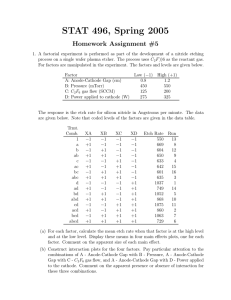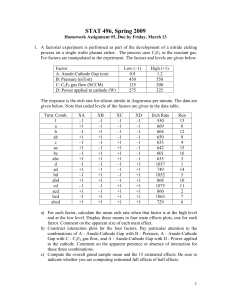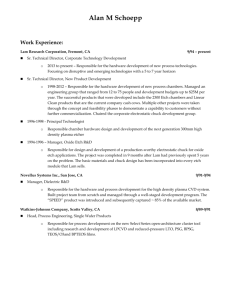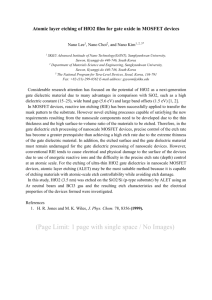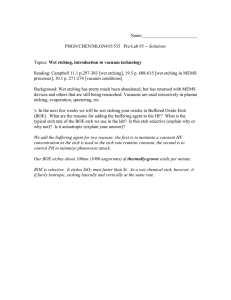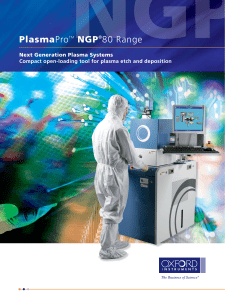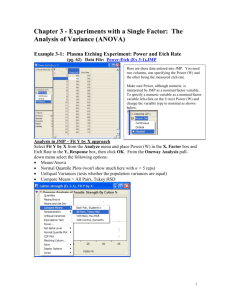Supplemental Material_Coax_APL_final
advertisement
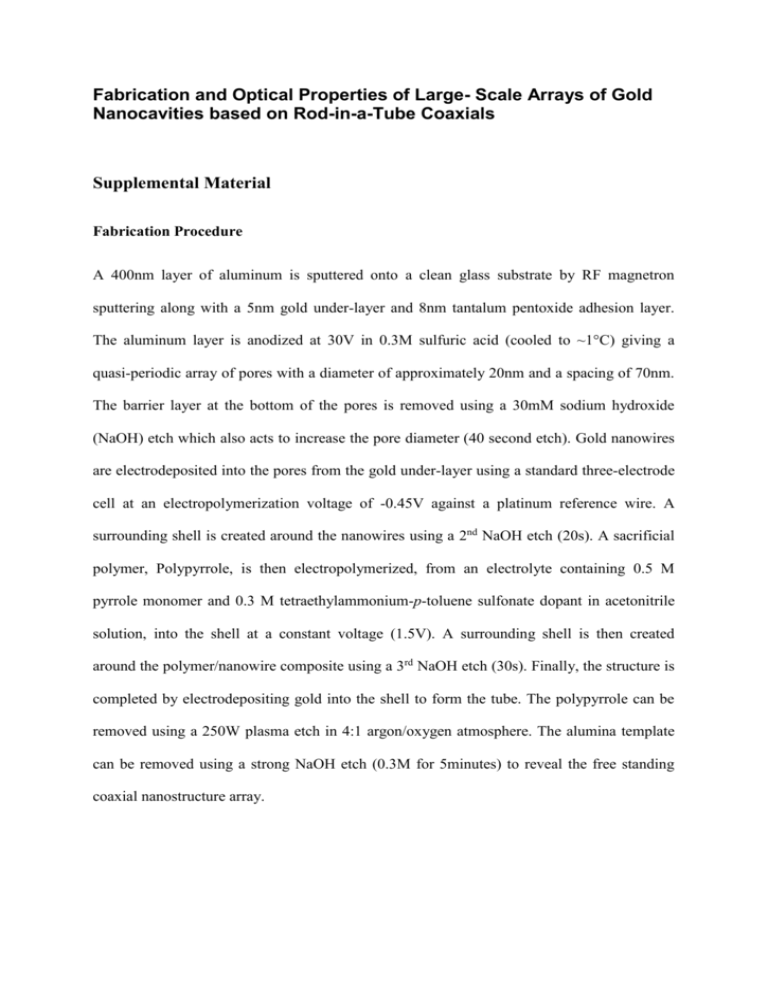
Fabrication and Optical Properties of Large- Scale Arrays of Gold Nanocavities based on Rod-in-a-Tube Coaxials Supplemental Material Fabrication Procedure A 400nm layer of aluminum is sputtered onto a clean glass substrate by RF magnetron sputtering along with a 5nm gold under-layer and 8nm tantalum pentoxide adhesion layer. The aluminum layer is anodized at 30V in 0.3M sulfuric acid (cooled to ~1°C) giving a quasi-periodic array of pores with a diameter of approximately 20nm and a spacing of 70nm. The barrier layer at the bottom of the pores is removed using a 30mM sodium hydroxide (NaOH) etch which also acts to increase the pore diameter (40 second etch). Gold nanowires are electrodeposited into the pores from the gold under-layer using a standard three-electrode cell at an electropolymerization voltage of -0.45V against a platinum reference wire. A surrounding shell is created around the nanowires using a 2nd NaOH etch (20s). A sacrificial polymer, Polypyrrole, is then electropolymerized, from an electrolyte containing 0.5 M pyrrole monomer and 0.3 M tetraethylammonium-p-toluene sulfonate dopant in acetonitrile solution, into the shell at a constant voltage (1.5V). A surrounding shell is then created around the polymer/nanowire composite using a 3rd NaOH etch (30s). Finally, the structure is completed by electrodepositing gold into the shell to form the tube. The polypyrrole can be removed using a 250W plasma etch in 4:1 argon/oxygen atmosphere. The alumina template can be removed using a strong NaOH etch (0.3M for 5minutes) to reveal the free standing coaxial nanostructure array. Optical Characterization Optical transmission spectra were acquired using a collimated white source directed at the sample and collected via a 1.5 mm diameter optical fibre bundle placed directly behind the sample. The fibre is coupled to a spectrograph (Andor, Shamrock 303i) and CCD camera (Andor, Newton). Analysis of coaxial structure and dimensions was carried using a JEOL 6500F scanning electron microscope. FEM Finite element simulations were carried out using Comsol Multiphysics 4.3 (RF Module) software.

